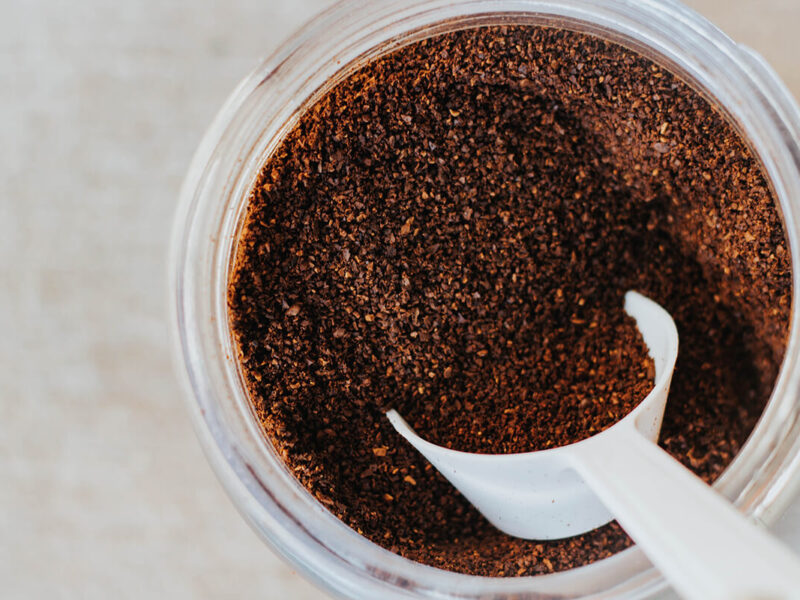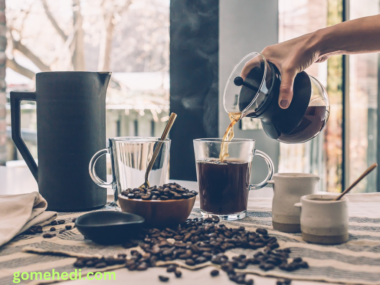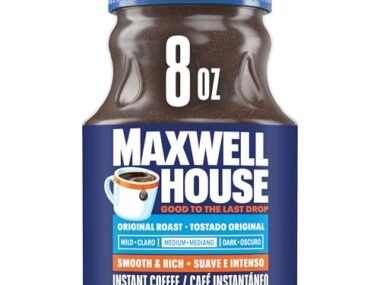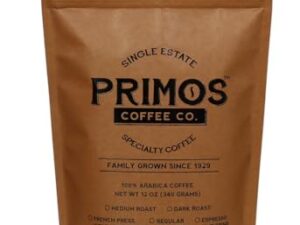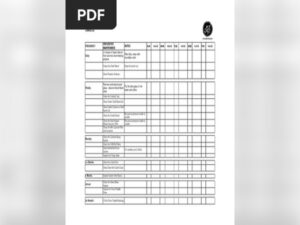Do you ever find yourself wondering how much coffee grounds for 12 cups you actually need for that perfect pot? You’re not alone. Getting the right ratio can make all the difference between a weak brew and a rich, satisfying cup of coffee. Let’s break it down the easy way.
Getting the right balance can be the difference between a smooth, flavorful brew and a bitter, watery disappointment. Imagine waking up to the rich aroma of coffee that promises the perfect start to your day. It all comes down to using just the right amount of coffee grounds.
You’ll discover the ideal measurement that can transform your morning routine. Stick around to uncover the secrets that will make you the coffee expert among your friends. Your mornings deserve this upgrade!
Coffee Ground Basics
Brewing the perfect cup of coffee is an art. It starts with understanding the right amount of coffee grounds. Using the correct measurement is key. It affects the taste and aroma of your coffee. Let’s explore the basics of coffee grounds for brewing 12 cups.
Understanding Coffee Grounds
Coffee grounds are the crushed particles of coffee beans. They vary in size and texture. Different brewing methods require different ground sizes. This affects the extraction process and flavor profile. Knowing your grind size ensures a delicious cup every time.
Importance Of The Right Measurement
Using too many coffee grounds makes your coffee bitter. Too few, and it becomes weak. For 12 cups of coffee, the standard measure is crucial. Generally, use 1 to 2 tablespoons of grounds per cup. This ensures a balanced brew.
| Cups of Coffee | Coffee Grounds (Tablespoons) |
|---|---|
| 6 | 6 to 12 |
| 12 | 12 to 24 |
Different Types Of Coffee Grounds
- Coarse Grounds: Best for French press. Large particles.
- Medium Grounds: Ideal for drip coffee makers. Even texture.
- Fine Grounds: Used for espresso machines. Powdery feel.
Tips For Measuring Coffee Grounds
- Use a standard coffee scoop. It holds about 2 tablespoons.
- Level the scoop for accuracy. Avoid heaping scoops.
- Adjust to taste. Start with the standard and tweak as needed.
Getting the right amount of coffee grounds is vital. It affects the taste and quality of your brew. Use these basics to enjoy a perfect 12-cup pot of coffee.
Brewing Ratios
Brewing the perfect pot of coffee isn’t just about selecting the right beans. It’s about finding the right brewing ratio. This ratio determines the balance between the coffee grounds and water. For 12 cups of coffee, getting this ratio right ensures a flavorful and satisfying brew. Different ratios can alter taste, strength, and aroma. Understanding these ratios helps coffee enthusiasts craft their ideal cup every time.
Standard Measurement
Using a standard measurement makes brewing straightforward and consistent. Coffee experts recommend using a ratio of one to two tablespoonsof coffee grounds per cup. For 12 cups, this equates to 24 tablespoons or approximately 1.5 cups of coffee grounds. This ensures a balanced flavor without overpowering bitterness.
Here’s a simple table for clarity:
| Cups of Coffee | Tablespoons of Coffee Grounds |
|---|---|
| 1 | 1 – 2 |
| 12 | 24 |
Consistency is key. Using a standardized approach helps beginners avoid common pitfalls. It provides a baseline to adjust flavors later. Some find this method reliable, especially when hosting gatherings or needing a dependable brew. The standard measurement suits most tastes, offering a harmonious blend of strength and smoothness.
Personal Preference
Coffee is personal. Each person’s taste varies. Some prefer stronger coffee, while others enjoy a lighter brew. Personal preference plays a crucial role in deciding the coffee-to-water ratio. Experimenting with different measurements helps find the ideal balance.
Consider these factors:
- Strength:Increase grounds for a stronger brew.
- Aroma:More grounds enhance aroma.
- Flavor:Adjust to taste preferences.
For those who love a bold cup, try using three tablespoonsper cup. This results in 36 tablespoons for 12 cups. Those favoring a lighter taste might use one tablespoonper cup, totaling 12 tablespoons.
Here’s a quick guide:
- Start with the standard ratio.
- Adjust to taste.
- Record changes for consistency.
Ultimately, the perfect cup depends on individual taste. Personalizing the ratio leads to a unique coffee experience. It encourages exploration and discovery. Finding that sweet spot brings satisfaction with every brew.
Calculating Amounts
Brewing a perfect pot of coffee requires precision. One crucial step is knowing how much coffee grounds are needed for 12 cups. Calculating the right amount ensures a rich and flavorful brew. Overuse leads to bitterness, while too little results in a weak, unsatisfying cup. Let’s explore how to measure coffee grounds accurately for 12 cups.
General Guidelines
Understanding the basic guidelines is essential for brewing 12 cups of coffee. The standard recommendation is two tablespoons of coffee grounds per six-ounce cup. For a 12-cup pot, this translates to:
- 24 tablespoons of coffee grounds
- Equivalent to 12 scoops, with each scoop being two tablespoons
Measuring by weight provides precision. Use approximately 72 grams of coffee grounds for 12 cups. A kitchen scale ensures accuracy, making it a preferred method for many coffee enthusiasts.
Here’s a simple table for quick reference:
| Number of Cups | Tablespoons | Grams |
|---|---|---|
| 6 | 12 | 36 |
| 12 | 24 | 72 |
Consistency in measurement ensures each pot delivers the same great taste. Use the same spoon or scale every time.
Different Coffee Types
Different coffee types require varying amounts of grounds. The grind size and roast level affect the measurement. For a coarse grind, often used in French press, slightly increase the amount. This compensates for the larger grind size, ensuring a full-bodied flavor.
Consider the roast level:
- Light Roast:Use a bit more. It’s less dense, needing extra grounds for a robust flavor.
- Dark Roast:Use a bit less. It’s denser, requiring fewer grounds to avoid bitterness.
For specialty coffees like espresso, adjustments are necessary. Espresso requires a fine grind and uses around 18 grams per shot, not suitable for a 12-cup pot.
Here’s a table for different coffee types and adjustments:
| Coffee Type | Adjustment |
|---|---|
| Coarse Grind | Increase by 1-2 tablespoons |
| Light Roast | Increase by 2 tablespoons |
| Dark Roast | Decrease by 2 tablespoons |
Adapting measurements based on coffee type enhances the brewing experience. It ensures every pot is tailored to personal taste preferences.
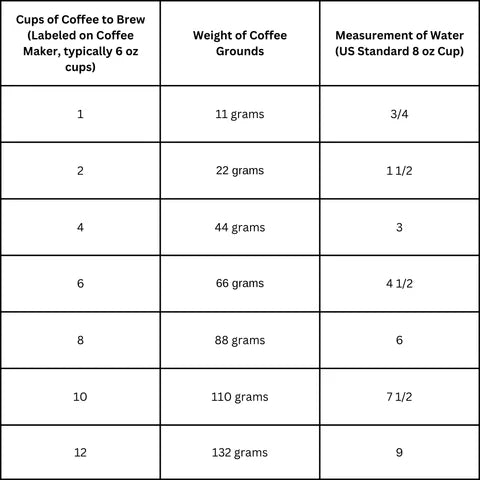
Credit: www.drivencoffee.com
Tools For Measuring
Brewing the perfect pot of coffee requires precision. Measuring coffee grounds accurately is crucial for achieving that rich flavor. Understanding the right tools for measuring can simplify this process, especially when brewing 12 cups. This section explores two popular tools: coffee scoops and digital scales. Each has its advantages, ensuring your coffee is consistently delightful.
Coffee Scoops
Using a coffee scoop is a traditional method for measuring coffee grounds. It is simple and effective for many coffee enthusiasts. A standard coffee scoop typically holds about 2 tablespoons of coffee grounds. This is ideal for measuring coffee for multiple cups.
For a 12-cup coffee maker, you’ll need about 24 tablespoons of coffee. That’s because most coffee makers require approximately 2 tablespoons per 6-ounce cup. Here’s a simple breakdown:
- 1 cup: 2 tablespoons
- 6 cups: 12 tablespoons
- 12 cups: 24 tablespoons
Benefits of using coffee scoops:
- Easy to use
- No batteries required
- Portable and durable
While coffee scoops are convenient, they may not always provide the most precise measurement. Different coffee types and grind sizes can affect the actual volume of a scoop. Yet, for those who value simplicity, scoops are a reliable choice.
Digital Scales
Digital scales offer a more accurate method of measuring coffee grounds. They measure weight instead of volume, which can be more precise. This is especially useful for those who prefer a specific coffee-to-water ratio.
When using a digital scale, measuring coffee for 12 cups becomes straightforward. A common ratio is 1 gram of coffee per 15 grams of water. For a standard 12-cup coffee maker, you might need about 72 grams of coffee grounds. Here’s a quick guide:
| Cups | Grams of Coffee |
|---|---|
| 1 | 6 |
| 6 | 36 |
| 12 | 72 |
Advantages of digital scales:
- Highly accurate
- Ideal for consistent results
- Helps in experimenting with ratios
Digital scales are excellent for those who appreciate precision in their brewing process. Though they require batteries and a bit of setup, the consistency they offer is unmatched. For coffee lovers who enjoy experimenting, a digital scale is a valuable tool.
Adjusting For Taste
Brewing coffee is an art. It involves finding the right balance between water and coffee grounds. For 12 cups of coffee, the standard ratio is often two tablespoons of coffee per cup. Yet, this isn’t a one-size-fits-all rule. Adjusting for taste is key. This customization lets you enjoy coffee just how you like it. Let’s explore how to tailor your coffee grounds for the perfect brew.
Strength Preferences
Everyone has different tastes. Some prefer a robust, intense flavor. Others like a milder, smooth brew. Adjusting the amount of coffee grounds helps in achieving your preferred strength.
To start, consider the standard ratio:
- Mild Strength:Use 1 to 1.5 tablespoons per cup.
- Medium Strength:Use 2 tablespoons per cup.
- Strong Strength:Use 2.5 to 3 tablespoons per cup.
Using more grounds results in a stronger coffee. Less grounds give a milder taste. Here’s a simple table illustrating the variations:
| Cup Count | Mild (tbsp) | Medium (tbsp) | Strong (tbsp) |
|---|---|---|---|
| 12 | 12-18 | 24 | 30-36 |
Experimenting with these measurements can help you find your perfect brew. Remember, the right strength is subjective. What matters is your enjoyment.
Brew Methods Impact
Different brewing methods affect the flavor and strength of coffee. Understanding these impacts helps in adjusting the coffee grounds effectively.
Drip Coffee Maker:This method is common for brewing 12 cups. It requires consistent ground size. Medium grind works best. Adjust grounds based on preferred strength.
French Press:Known for its bold flavor. It uses coarse grounds. Increasing grounds enhances strength, while reducing them softens the taste.
Espresso Machine:Produces concentrated coffee. It needs fine grounds. More grounds lead to a thicker brew. Less grounds make it lighter.
Here’s a quick guide to adjust your grounds:
- Identify your brewing method.
- Choose the correct grind size.
- Adjust the quantity based on desired strength.
Each brewing method has unique characteristics. Tailoring your coffee grounds to these methods ensures a satisfying cup. Understanding the interaction between grounds and brew methods enhances your coffee experience.
Common Mistakes
Brewing the perfect pot of coffee is an art. Many coffee lovers aim to brew 12 cups of rich, flavorful coffee. Yet, common mistakes often happen. These errors impact the taste and strength of your brew. Understanding these mistakes can lead to a better coffee experience. Below, we explore the two most frequent errors: using too much or too little coffee.
Too Much Coffee
Using too much coffee is a common mistake. It results in an overly strong and bitter brew. This happens when you don’t measure the coffee accurately. A standard rule is two tablespoons of coffee for every six ounces of water. For a 12-cup pot, this means about 24 tablespoons or 1.5 cups of coffee grounds. Exceeding this amount can lead to an unpleasant taste.
Why do people use too much coffee? Here are some reasons:
- Assuming more coffee means better flavor.
- Overestimating the size of coffee cups.
- Lack of proper measuring tools.
Avoid these pitfalls by measuring your coffee accurately. Use a standard tablespoon or a kitchen scale for precision. Below is a simple table to guide you:
| Cups of Coffee | Tablespoons of Grounds |
|---|---|
| 6 Cups | 12 Tablespoons |
| 12 Cups | 24 Tablespoons |
Too Little Coffee
Using too little coffee results in a weak brew. A lackluster cup that lacks flavor and aroma. This happens when you underestimate how much coffee is needed. Just like using too much coffee, not using enough is a common error. For a 12-cup pot, using less than 24 tablespoons can make the coffee taste diluted.
Reasons for using too little coffee include:
- Trying to save on coffee grounds.
- Misunderstanding the coffee-to-water ratio.
- Not considering the strength preferences of all drinkers.
To avoid weak coffee, stick to the recommended measurement. Adjust according to personal taste after trying the standard ratio. Remember, the quality of your coffee can also depend on the type of beans and grind size. Ensure you use fresh, good-quality coffee for the best results.
Storage Tips
Brewing the perfect pot of coffee requires precision. Knowing the right amount of coffee grounds for 12 cups is crucial. But storing those grounds correctly is just as important. Proper storage preserves flavor and freshness, ensuring every cup is delightful. Let’s explore some essential storage tips.
{‘heading’: ‘keeping Fresh’, ‘subheadings’: []}
Freshness matters. Coffee grounds lose their aroma and taste over time. Keep them fresh to enjoy rich, flavorful coffee. Here’s how:
- Avoid heat and light:Store coffee away from direct sunlight and heat sources. Light and heat accelerate oxidation.
- Minimize air exposure:Air exposure leads to staleness. Use airtight containers to reduce contact with air.
- Control humidity:Moisture can ruin coffee grounds. Keep them dry to maintain quality.
Consider storing your coffee in a cool, dark place like a pantry. This environment helps preserve freshness for longer. A table below shows ideal conditions:
| Factor | Recommendation |
|---|---|
| Temperature | Cool (60-70°F) |
| Light | Dark (No direct sunlight) |
| Humidity | Low (Avoid moisture) |
Following these tips ensures your coffee grounds stay fresh longer, enhancing your coffee experience.
{‘heading’: ‘best Containers’, ‘subheadings’: []}
Choosing the right container can make a big difference. It keeps your coffee grounds fresh and flavorful. Here are some top choices:
- Airtight jars:Glass jars with rubber seals are excellent. They prevent air and moisture from entering.
- Opaque containers:Metal or ceramic containers block light. Less light means better preservation.
- Vacuum-sealed bags:These bags suck out air, maintaining freshness. Ideal for long-term storage.
Each container type offers unique benefits. Here’s a quick comparison:
| Container Type | Benefits |
|---|---|
| Airtight jars | Prevents air entry; reusable |
| Opaque containers | Blocks light; durable |
| Vacuum-sealed bags | Maximizes freshness; space-saving |
Choose a container based on your needs and preferences. Proper storage elevates your coffee experience, ensuring each cup is as delightful as the last.
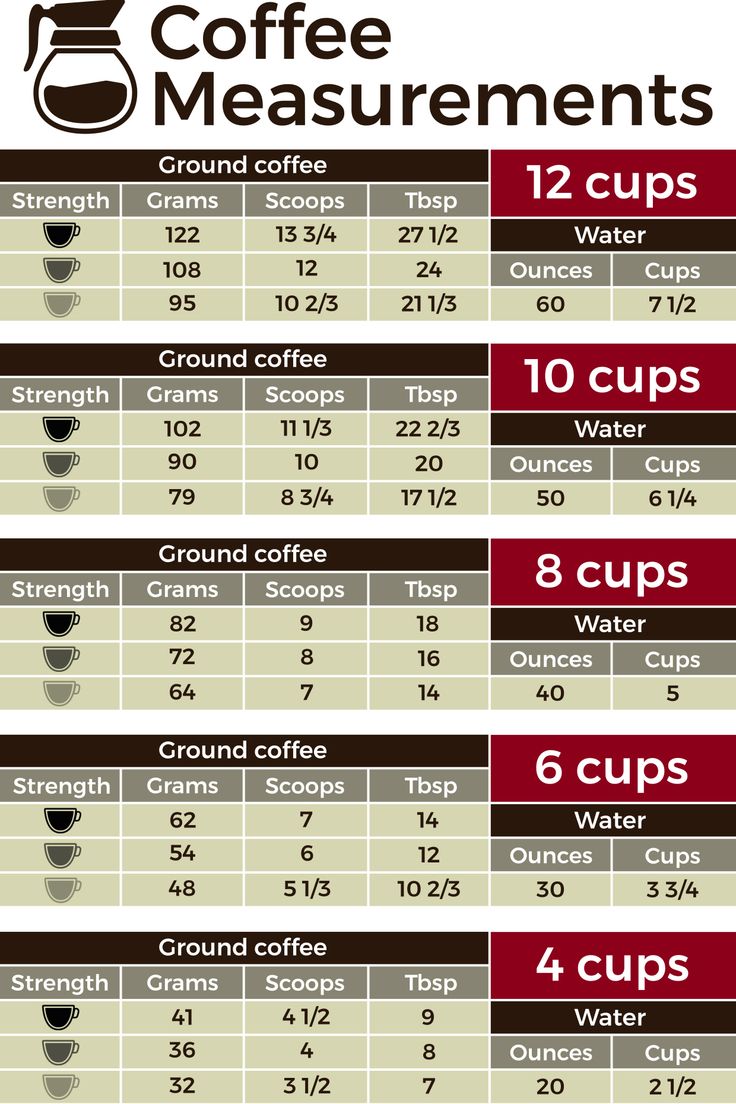
Credit: www.umamicart.com

Credit: www.pinterest.com
Frequently Asked Questions
What Is The Ideal Coffee-to-water Ratio?
For 12 cups, use 12 tablespoons of coffee grounds. This ratio ensures a balanced and flavorful brew. Adjust according to personal taste preferences. Some prefer a stronger or milder cup. Experiment to find what suits you best. Always use fresh coffee for optimal taste.
How Many Ounces In A 12-cup Coffee Pot?
A 12-cup coffee pot typically holds 60 ounces of water. Each “cup” in a coffee maker equals 5 ounces. This differs from a standard 8-ounce cup. Understanding this helps in measuring the right amount of coffee grounds. Always check your coffee maker’s manual for exact measurements.
Can I Use A Coffee Scoop Instead?
Yes, you can use a coffee scoop. One scoop generally equals two tablespoons. For 12 cups, use six scoops. This method simplifies measuring. Ensure your scoop is accurate. Coffee scoops can vary in size. Consistency in measurement helps in achieving the desired strength every time.
What If My Coffee Tastes Too Strong?
If your coffee tastes too strong, reduce the amount of grounds. Try using 10 tablespoons instead of 12. Experiment with water and coffee ratios. Adjusting the brew time can also help. Everyone’s taste preferences are different. Find the balance that suits your palate.
Conclusion
Brewing the perfect pot of coffee can be simple. Use the right amount of grounds. Twelve cups need 12 to 24 tablespoons of coffee. Adjust for taste preferences. Stronger? Add more grounds. Milder? Use fewer. Experimenting is key. Find your favorite balance.
Freshly ground beans enhance flavor. Choose quality coffee for best results. Enjoy each sip. Coffee is more than a drink. It’s a ritual. A chance to savor the moment. Make it yours. Feel the warmth. Share with friends. Savor the aroma.
Perfect coffee awaits. Start brewing today.
